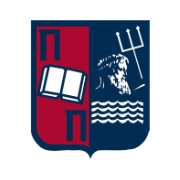Learning Outcomes
- Upon successful completion of the course, the students will be able to:
- select the adoption of appropriate models and protocols for network management, depending on their technical characteristics
- design solutions for the initial design and the development of computer networks, in the context of specific business objectives and technical requirements/problem
- analyze, recognize, and assess design issues in wireless sensor networks
- identify and evaluate technical and business conditions and clauses to monitor the required level of service in networks through a service level agreement (SLA).
During the laboratory practice, the student exercises to monitor and control the operation of remote network elements with the utilization of specific protocols.
Course Contents
•The architecture of the Internet, Review of basic concepts of networks and network protocols
•Subnetting and Hierarchical Routing
•Software Defined Networking (SDN), Network Function Virtualization (NFV)
•Data center networking
•Role of management systems, Introductory management concepts, Management functions: configuration, fault, accounting, performance and security management, Management levels: element management, network management, service management, business management
•Management entities and managed nodes, Design and development of management applications
•SNMP Protocol (Simple Network Management Protocol), Management Information Base (MIB), MIB-II
•RMON (Remote network Monitoring)
•NETCONF protocol
•Web-based Management
•ISO/OSI management standard
•TMN management model
•Design of fixed and wireless access networks
•Design Issues of Wireless Sensor Networks
•Network performance monitoring through a Service Level Agreement
Furthermore, in the platform eclass /Aristarchus lecture notes and laboratory exercises are posted for the students.
Recommended Readings
•Miliou Amalia N., Nikopolitidis Petros, Pomportsis Andreas S. (2007): Management of computer networks, A. Tziola & Sons Publications
•Development and Management of Computer Networks, Fouliras Panagiotis, Greek Academic Electronic Books – “Kallipos” Repository
•Computer Networking: A Top-Down Approach, James Kurose, Keith Ross, Pearson Education Limited
•P.Oppenheimer (2010): Top-Down Network Design, 3rd Edition, Cisco Press
•Sudhir Dixit, Ramjee Prasad, Wireless IP and Building the Mobile Internet (Artech House Books, 2003)
•Nathan Muller, LANs TO WANs: The Complete Management Guide, (Artech House Books, 2003)
•Matthew Liotine, Mission-Critical Network Planning, (Artech House Books, 2003)
•Nihal Kularatna, Dileeka Dias, Essentials of Modern Telecommunications Systems (Artech House Books, 2004)

